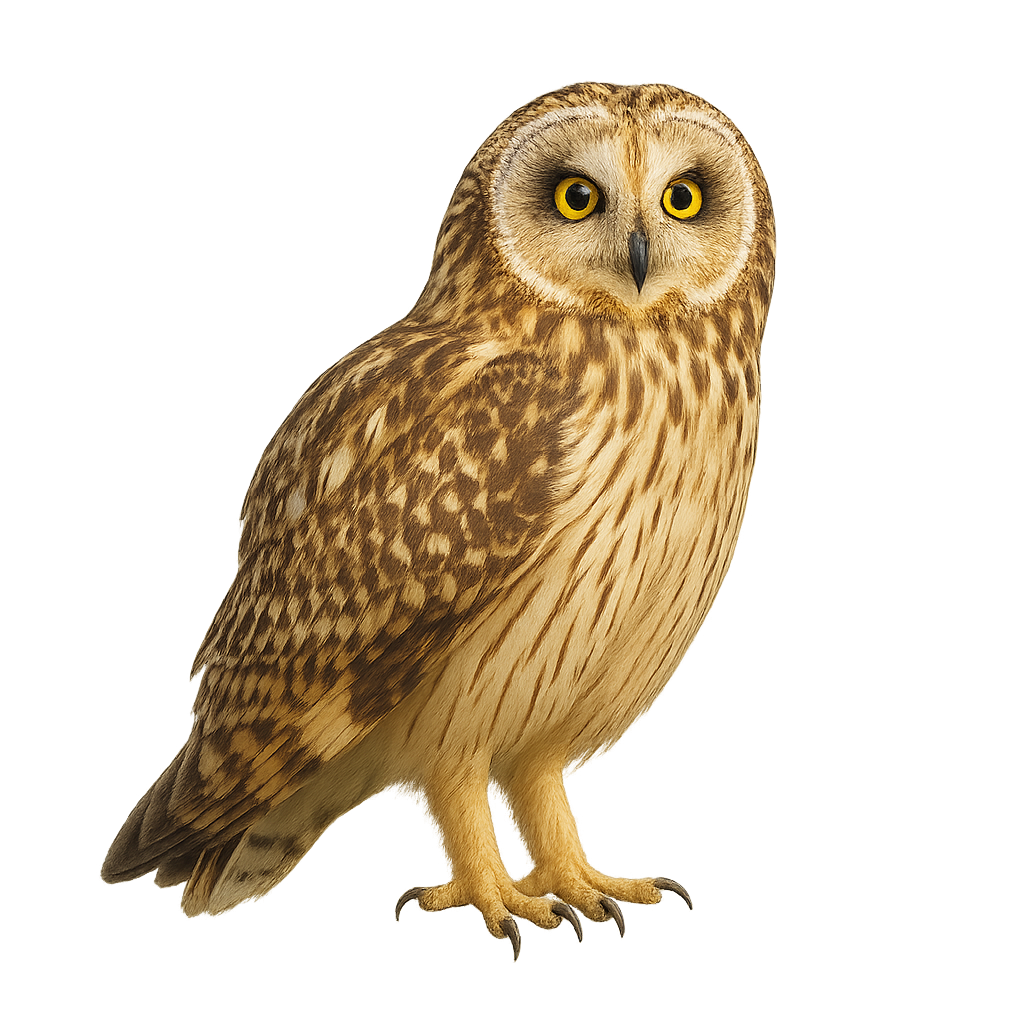Your wildlife photography guide.
Explore the short-eared owl in detail, study its behavior, prepare your shots.
Where to observe and photograph the short-eared owl in the wild
Learn where and when to spot the short-eared owl in the wild, how to identify the species based on distinctive features, and what natural environments it inhabits. The WildlifePhotographer app offers tailored photography tips that reflect the short-eared owl’s behavior, helping you capture better wildlife images. Explore the full species profile for key information including description, habitat, active periods, and approach techniques.
Short-eared owl
Scientific name: Asio flammeus

IUCN Status: Least Concern
Family: STRIGIDAE
Group: Birds
Sensitivity to human approach: Suspicious
Minimum approach distance: 50 m
Courtship display: March to May
Incubation: 25–28 jours
Hatchings: April to June
Habitat:
Wetlands and meadows
Activity period :
Mainly active at night, generally discreet during the day.
Identification and description:
The Short-eared Owl is a small nocturnal raptor, easily recognizable by its pale yellowish plumage and large, piercing yellow eyes. It measures about 34 to 40 cm in length, with a wingspan of 80 to 95 cm, and weighs between 180 and 400 g. Its face is disc-shaped, like that of other owls, and its plumage, which is cream or brown, is speckled with dark spots that provide excellent camouflage in the grasslands and marshes where it resides. The Short-eared Owl primarily inhabits open areas, such as marshes, grasslands, and farmland, across Europe, Asia, and North America. It mainly hunts small mammals, such as voles and mice, as well as birds and insects. This raptor is an excellent nocturnal hunter, using its very sensitive ears and sharp vision to locate prey in the dark. Although the species is not immediately endangered, it is vulnerable to habitat loss, water pollution, and human disturbance.
Recommended lens:
300 mm – adjust based on distance, desired framing (portrait or habitat), and approach conditions.
Photography tips:
Use a telephoto lens to photograph from a distance, respecting the species' discreet nature.
Photograph early in the morning or late in the afternoon, when soft light highlights the marsh owl's plumage.
Look for it in open, grassy areas, such as meadows, marshes, and fields, where it primarily hunts voles and other small mammals.
Be patient and discreet to avoid disturbing its natural behavior. Avoid sudden movements and keep quiet.
Always respect its natural environment and do not disturb its hunting habits, especially during the breeding season.
The WildlifePhotographer App is coming soon!
Be the first to explore the best nature spots, track rutting seasons, log your observations, and observe more wildlife.
Already 1 432 wildlife lovers subscribed worldwide

